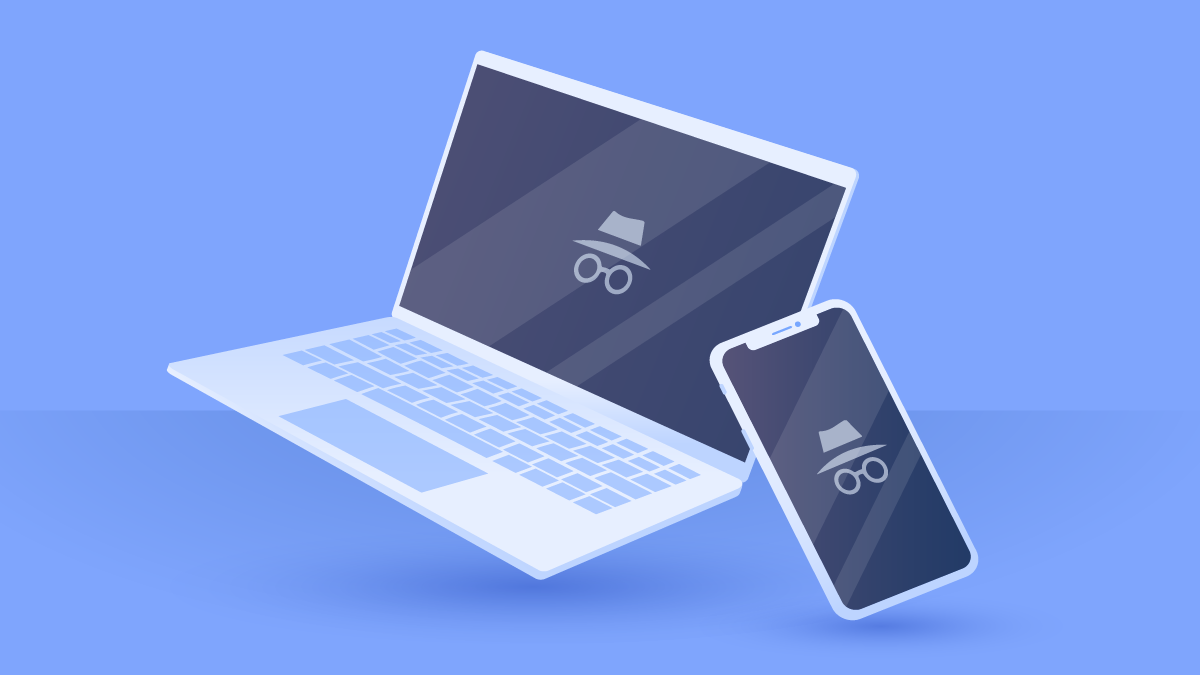How to use private browsing in Safari on an iPhone, iPad, and Mac
If you’re concerned about your online security, you should take a few minutes to learn about private browsing on iPhone, iPad, and Mac devices. Browsing privately is a good way to protect yourself from trackers and scammers while keeping your browsing history private. Luckily, it’s very easy to use the browser you already have in private mode to stay under the radar. In this article, we’ll talk about Safari’s private browsing and how it protects your confidentiality online.
Table of Contents
Table of Contents
What is private browsing on an iPhone?
Private browsing on an iPhone or other devices is browsing without leaving traces of your activity history on your device. Many people don’t realize that their browsers track their activity in many ways. Your browser stores cookies and browsing data from all the sites you visit.
However, private browsing is different. By opening a private window or a new private browsing session, you start browsing in incognito mode. What is incognito mode, and how does it work? While it doesn’t provide anonymity online, this private mode removes tracking cookies once the session is over and tells your browser to delete browsing history in its cache as soon as you’ve finished your session.
Benefits of using private browsing on an iPhone
The advantages of using a private browser iPhone session are plentiful. However, private mode doesn’t mean that your search history isn’t recorded by your internet service provider (ISP). It simply means that your device won’t record your browsing history after you close the window.
No user history
What if you’re a developer and you want to check how well a site loads for a first-time user? When you browse privately and open the site, you’ll get a cache-free experience every time.
Simultaneous logins
If you want to open two Gmail accounts simultaneously, for example, you can open one in a regular window and the other in private browsing mode. This essentially makes you appear as two different users to the Gmail site and it won’t confuse your accounts.
Price tracking
Tracking cookies from hotel and airline booking sites remember you and raise prices when you come back as a sort of penalty for not taking their deal the first time it was offered. Private browsing mode can prevent this from happening.
Keeping search history private
Most people use private browsing to automatically delete cookies and search history once they close the private window. If someone else uses your computer or iPhone, they won’t be able to see what you’ve been looking at.
Can the iPhone private browsing mode be tracked?
One of the first questions people ask is, “Can private browsing be traced on an iPhone?” The short answer is yes, private browsing history on an iPhone can still be tracked.
If you log into any site in incognito mode, those sites and advertisers will still record the login and add it to your user history. When you’re incognito, your private browsing history on an iPhone or other devices is automatically deleted. However, each site you visit is still processed by the domain name system (DNS), and that request is still logged. However, getting this information requires access to your computer or other devices. Fortunately, you can delete your private browsing history by flushing the DNS cache. Take a look at our guide to learn how to see and delete your incognito history.
How to enable Safari private browsing
In Safari, starting a private browsing session is quick and easy to do, even for beginners.
Enable private browsing on macOS
If you’re using Safari on a Mac computer running macOS, you can turn private browsing on following these steps:
- Open up Safari.
- Click on “File.” This will open a dropdown menu.
- Click on “New private window” in that menu. This opens a new browsing window with a dark address bar showing you’re in private mode.
Enable private browsing on iOS
The iOS operating system lets you use Safari as a private browsing for iPad and iPhone app. Here’s how to open private browsing on Safari for iPhone and iPad:
For iOS17:
- Open Safari.
- Tap the “Tabs” icon (a square overlapping another square).
- Swipe right until you see the “Private” tab.
- Tap the + icon to open a tab and start browsing in private mode.
For older iOS versions:
- Open Safari.
- Tap on “Tabs.” If you already have tabs open, it will say the number, such as “8 tabs.” This will open a new menu.
- Tap on “Private.” This will open the private browsing mode.
- Tap the + icon to open a tab and start browsing in private mode.
How to turn off the Safari private browsing mode
If you don’t want to browse privately anymore, here’s how to turn off private browsing on Safari:
For macOS, simply close the private browsing window, and you’re done.
For iOS17:
- In Safari, tap and hold the “Tabs” icon (a square overlapping another square).
- Swipe left until you see “[number] tabs.”
- Tap the tab you want to open or “+” for a new tab, and you’ll be browsing in regular mode.
For older iOS versions:
- In Safari, tap on the “Tabs” icon (a square overlapping another square). This opens a new tab groups menu.
- Tap on “[number] tabs.” You’ll be back in regular browsing mode.
How to fix Safari private browsing mode not working
In case Safari private browsing isn’t working, you can try these solutions.
- Restart Safari. On a Mac computer, right-click on the Safari icon in the dock and choose “Quit.” On an iPhone or iPad, swipe up and hold to show your active apps, then swipe Safari up and away to close it. When you restart Safari, private browsing should now work.
- Restart your device. On a Mac, click the Apple icon and then “Restart.” On an iPhone or iPad, press and hold either the power button (older devices) or the volume up button (newer devices), then slide the slider to power off. When you restart, private browsing should work.
Is Safari private browsing actually private?
Normally, your browser collects your search history, logging the search terms you look into and all the web pages you visit. This data appears on your device’s search history and is logged by your ISP, where it could be accessed by government agencies or network admins. Even in private mode, this history is still logged. Also, private browsing doesn’t mask or hide your IP address because an identifier is often used to determine a user’s location.
Some search engines and browsers are more secure and private than others, and they can give you extra protection. For example, Firefox and Epic are two of the most secure browsers for your privacy. Meanwhile, Startpage and DuckDuckGo are some of the best private search engines if you are looking for something that will collect less data than Google or Yahoo.
Want to read more like this?
Get the latest news and tips from NordVPN.

